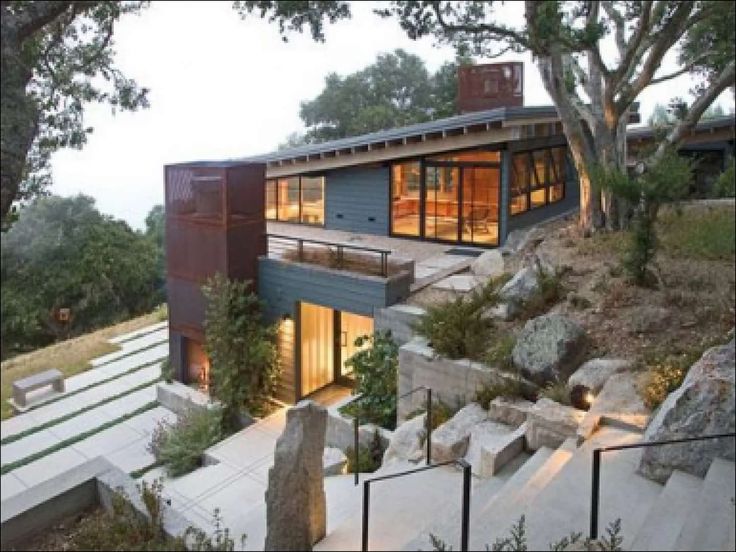webnews
Best tips and advice on any topic
Hillside Homes How Home Builders Tackle Sloping Terrain
Did you know that building homes on sloping terrain can present unique challenges for home builders? Constructing a home on a hillside requires particular expertise and careful planning to ensure structural integrity, maximise views, and minimise environmental impact.
In this blog post, we will delve into the world of hillside homes and explore how home builders Canberra tackle the complexities of sloping terrain.
Understanding the Challenges of Sloping Terrain
Building on sloping terrain differs significantly from construction on flat land. The natural topography presents many challenges that must be overcome to create a safe and functional living space. Some of the potential difficulties include soil erosion, drainage issues, and foundation stability.
One of the primary concerns when building on a hillside is soil erosion. The steep slopes make it easier for rainwater to wash away the topsoil, potentially destabilising the foundation. Consult aksharacthomes.com.au, the leading home builders near you. They must implement erosion control measures, such as retaining walls and terracing, to prevent soil erosion and maintain the stability of the property.
Additionally, managing water drainage is crucial in hillside construction. The natural flow of water can cause erosion and flooding if not properly managed. Home builders employ various methods, including drainage systems, rain gardens, and permeable paving, to redirect water away from the property and prevent potential damage.
Designing for Success
A well-thought-out design that integrates with the natural landscape is essential for hillside homes. Home builders home builders Canberra must consider the unique characteristics of the terrain to maximise views, manage slopes, and minimise the environmental impact of the construction.

Maximising views is a crucial aspect of designing hillside homes. The elevated position of these properties often offers breathtaking panoramic views of surrounding natural beauty. Home builders strategically position windows, balconies, and outdoor living spaces to take full advantage of the picturesque vistas, creating a seamless blend between indoor and outdoor living.
Managing slopes is another crucial consideration in hillside home design. Home builders utilise techniques such as terracing, where the hill is divided into multiple flat levels, to create usable spaces that are both aesthetically pleasing and functional. Reclaiming and stabilising slopes not only enhances the overall design but also ensures the long-term stability of the property.
Foundation and Structural Considerations
The foundation requirements of hillside homes differ significantly from those of traditional flat land construction. Homebuilders must employ techniques that provide stability and support on sloping terrain.
One common approach is the use of retaining walls. These structures are designed to hold back the soil and prevent erosion. Retaining walls provide essential support and create level areas for home construction. Depending on the desired aesthetic and functional requirements, they can be built from various materials, including concrete, stone, or timber.
Piers is another method home builders employ to ensure structural integrity on sloping terrain. These vertical supports elevate the home above the ground and provide stability. Depending on the specific site conditions and engineering requirements, Piers can be either driven deep into the ground or constructed on a concrete foundation.
Managing Water Drainage
Proper water drainage is critical for hillside homes' long-term stability and functionality. Homebuilders implement various methods to manage water runoff and prevent erosion and flooding.
One effective technique is the installation of drainage systems. These systems collect and redirect water away from the property, preventing it from pooling or causing damage. French drains, for example, consist of a perforated pipe surrounded by gravel, which allows water to flow away from the home's foundation.
Rain gardens are another environmentally friendly solution used by home builders. These gardens are designed to capture and absorb rainwater, reducing the amount of runoff and preventing erosion. They also create attractive landscaping features that enhance the property's overall aesthetic appeal.
Incorporating Landscaping Solutions
Landscaping plays a crucial role in hillside homes, helping to blend the property seamlessly with its natural surroundings. Home builders use various landscaping techniques to enhance the beauty and functionality of hillside properties.
Terracing is a common landscaping solution used on slopes. It creates level areas that can be used as gardens, outdoor seating, or play spaces. Terraced gardens provide functional spaces and add visual interest and texture to the overall landscape.
Native plantings are another essential aspect of hillside home landscaping. Home builders choose plants well-suited to the local climate and soil conditions, ensuring long-term survival and minimal maintenance requirements. Native plants also contribute to preserving local biodiversity and providing wildlife habitat.
Conclusion
Building homes on sloping terrain presents unique challenges for home builders. However, these challenges can be overcome with the right expertise and careful planning. The reputable home builders Canberra can create stunning hillside homes that offer functionality and beauty by understanding the complexities of sloping terrain, designing with the natural landscape in mind, and implementing appropriate foundation, drainage, and landscaping solutions.
If you're considering building a home on a hillside, don't be discouraged by the potential difficulties. Look for reputable home builders with experience in hillside construction, and together, you can consult aksharacthomes.com.au and create the home of your dreams that perfectly integrates with the natural beauty of the surrounding terrain. Hillside living offers unparalleled views, a close connection with nature, and a unique sense of tranquillity – so embrace the possibilities and embark on your hillside home journey today.
Source: Hillside Homes How Home Builders Tackle Sloping Terrain
